Latest Data Confirms U.S.-Canada Trade is Uniquely Balanced
Just in time for Prime Minister Mark Carney’s meeting with Donald Trump in Washington, the U.S. Census Bureau has released year-end 2024 data on America’s bilateral trade flows in goods and services. This data reconfirms that the U.S trade deficit is neither new, nor an “emergency” (as Trump has claimed in order to invoke special emergency powers to set tariffs). And it reconfirms that the U.S. trade relationship with Canada is uniquely balanced, and beneficial to the U.S.
Given Trump’s proclivity to simply invent statistics on trade and other economic indicators, it is important that Canadians have the actual data in hand to evaluate the outcome of this historic meeting.
Here are updated indicators regarding the U.S. bilateral trade relationship with Canada and other countries. They update material contained in the Centre for Future Work’s report from January, Who’s Subsidizing Whom? See that original report for more information on measuring and understanding trade imbalances, and analysis of ways in which Canada subsidizes the U.S. through several unusually favourable trade arrangements.
The overall U.S. trade deficit in goods and services increased in 2024, reaching $918 billion. That’s an increase of 17% from 2023, but still below the all-time high nominal deficit of $944 billion recorded in 2022. As a share of U.S. GDP, the deficit equaled 3.1% in 2024, well below the 3.6% recorded in 2022 – and significantly lower than deficits incurred in earlier years (deficits were over 5% of U.S. GDP in the mid-2000s).
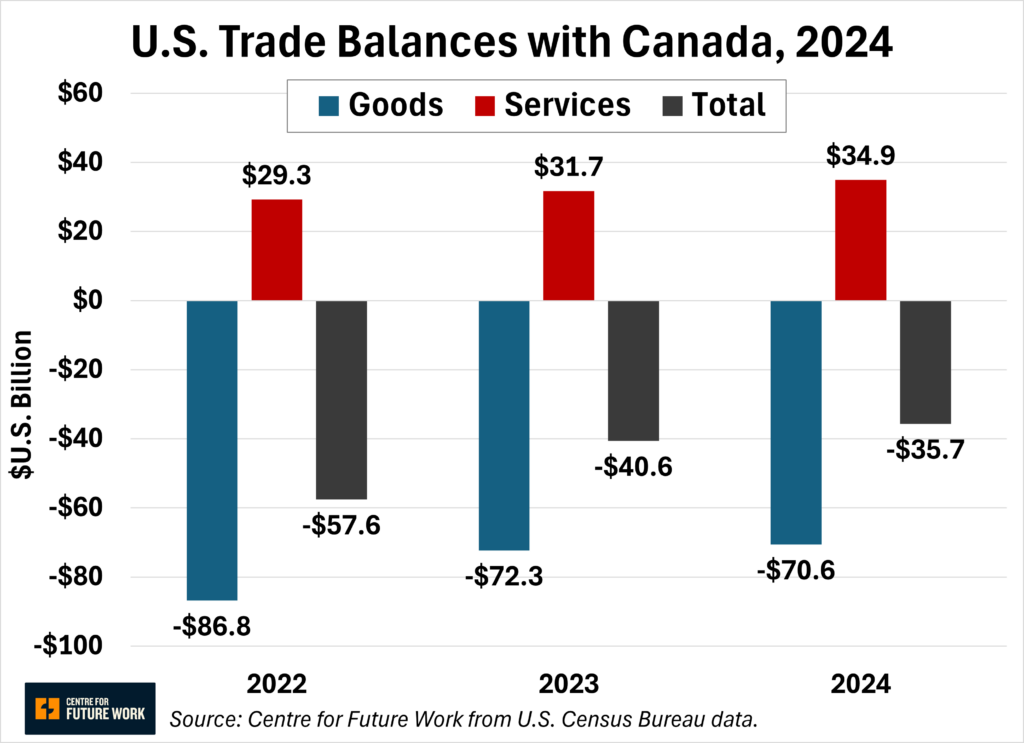
However, America’s trade with Canada bucked that trend in 2024. U.S. imports from Canada declined by $6 billion, while U.S. exports to Canada were steady. The bilateral U.S. deficit in goods and services with Canada thus shrank by 12%, falling to $35.7 billion (U.S.). The U.S. trade deficit with Canada in 2022 ($57.6 billion U.S.) was inflated by high prices for oil (Canada’s largest export to the U.S.). In just two years, therefore, the bilateral deficit with Canada has declined by almost 40%.
Trump has regularly claimed that the bilateral U.S. trade deficit with Canada amounts to hundreds of billions of dollars. That claim is false – as is his claim that this deficit amounts to a “subsidy.”
Relative to overall U.S. spending, the U.S. trade deficit with Canada equaled 0.12% of U.S. GDP in 2024. That is barely half the relative size of the bilateral deficit in 2022 (0.22%). The bilateral deficit with Canada equaled less than 4% of the U.S. global trade deficit in 2024.
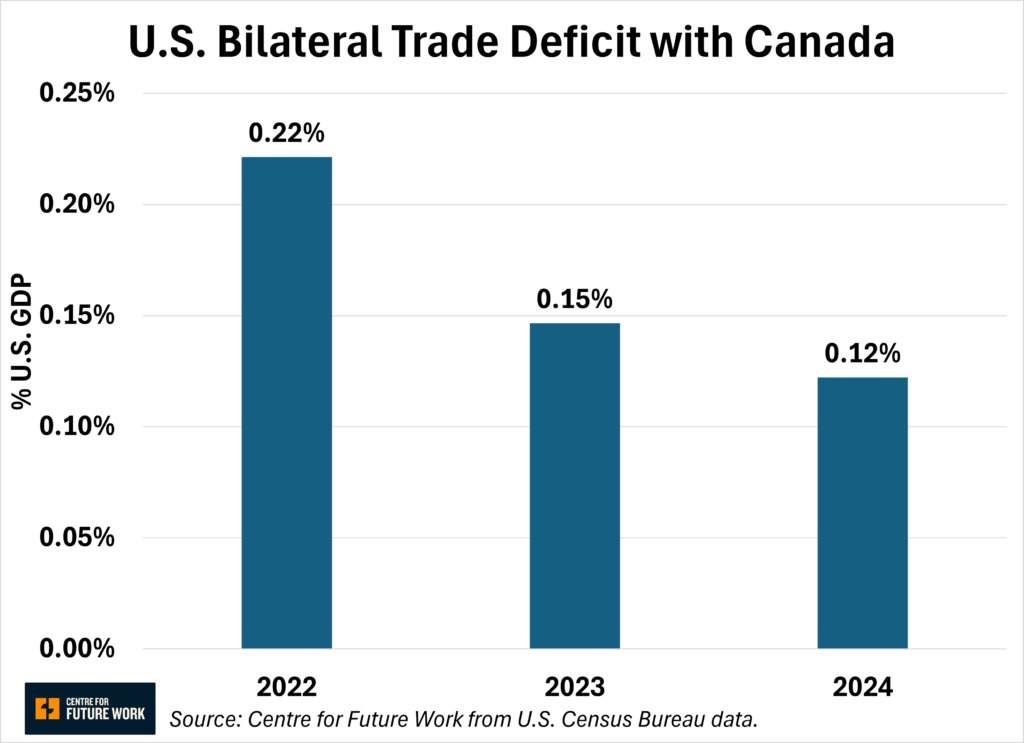
It is interesting to compare the trajectory of bilateral trade in goods and services. America’s bilateral deficit in goods trade with Canada has shrunk significantly in the last two years (again, largely due to moderating oil prices). The U.S. bilateral surplus in services trade has grown steadily. The bilateral services surplus ($35 billion in 2024) now offsets half of the goods deficit.
Trump generally ignores services industries in launching his attacks on other countries – for the obvious reason that the U.S. has a large surplus in services trade (almost $300 billion in 2024), undercutting his argument that the U.S. is “taken advantage of” by the rest of the world. This week, however, he has imposed tariffs on the film industry (an important tradeable service), and may consider other services-related trade actions.
Given Canada’s disproportionate purchases of U.S. services, there is considerable scope to consider application of counter measures targeting U.S. services businesses (such as data, business, technology, and financial services). That would enhance Canada’s leverage in future trade negotiations with the U.S.
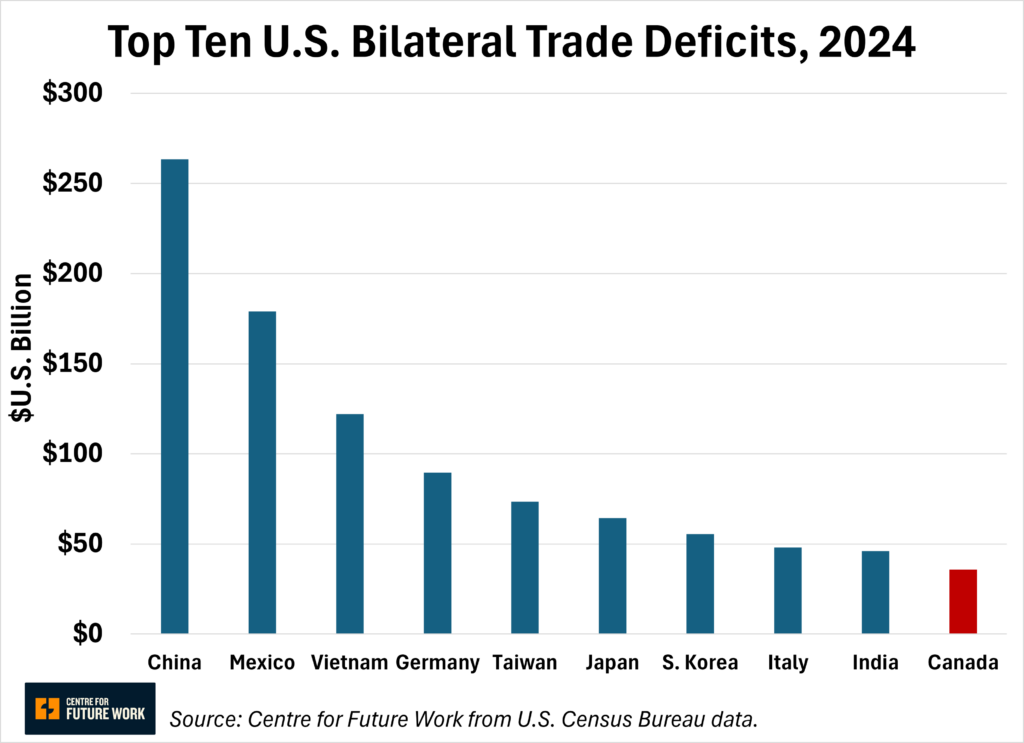
America’s bilateral deficit with Canada ranks tenth among U.S. trading partners, It is one-seventh the size of the U.S. deficit with China, and much smaller than deficits with Mexico and other Asian countries.
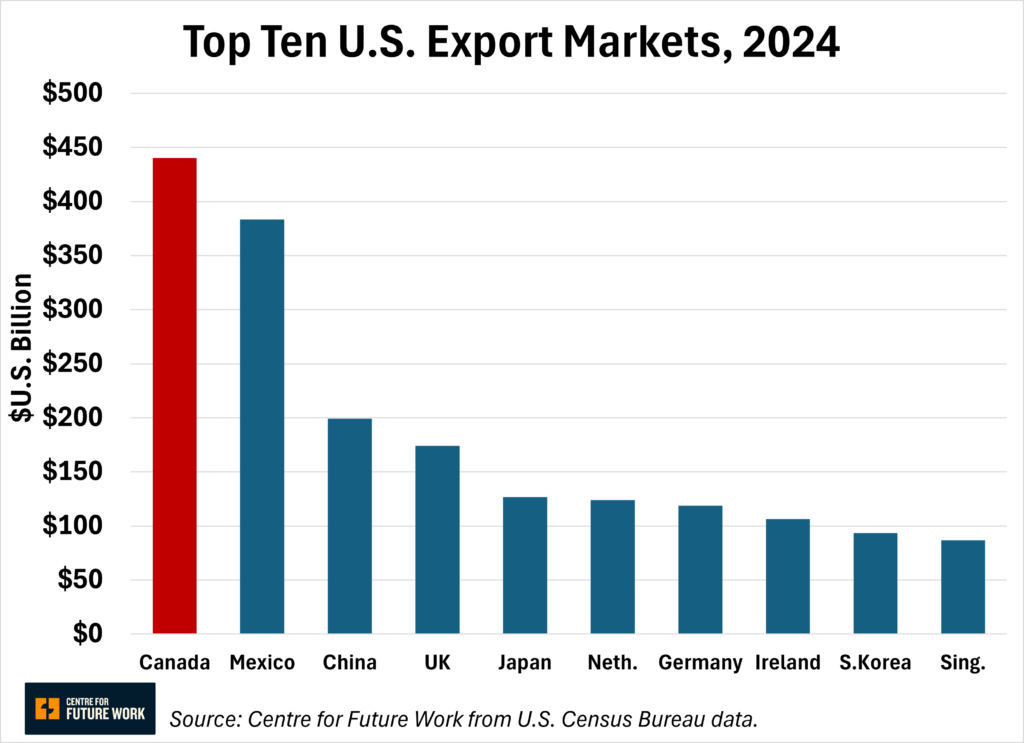
Canada retained its crown as the largest export market for U.S. goods and services in 2024. Canada purchased $440 billion in imports from the U.S. in 2024, equal to 14% of America’s worldwide export sales. Again, the importance of the Canadian market to U.S. businesses gives Canada significant bargaining leverage in future trade discussions. Canada purchased more than twice as much from the U.S. last year, as China did.
America’s small bilateral deficit with Canada pales further in comparison to the enormous two-way trade between the two countries: $916 billion in total in 2024, by far the largest bilateral trade flow between any two countries in the world. Canada purchased 92.5 cents of imports from the U.S., for every dollar of Canadian exports going to the U.S. And that bilateral trade flow has become gradually more balanced in recent years.
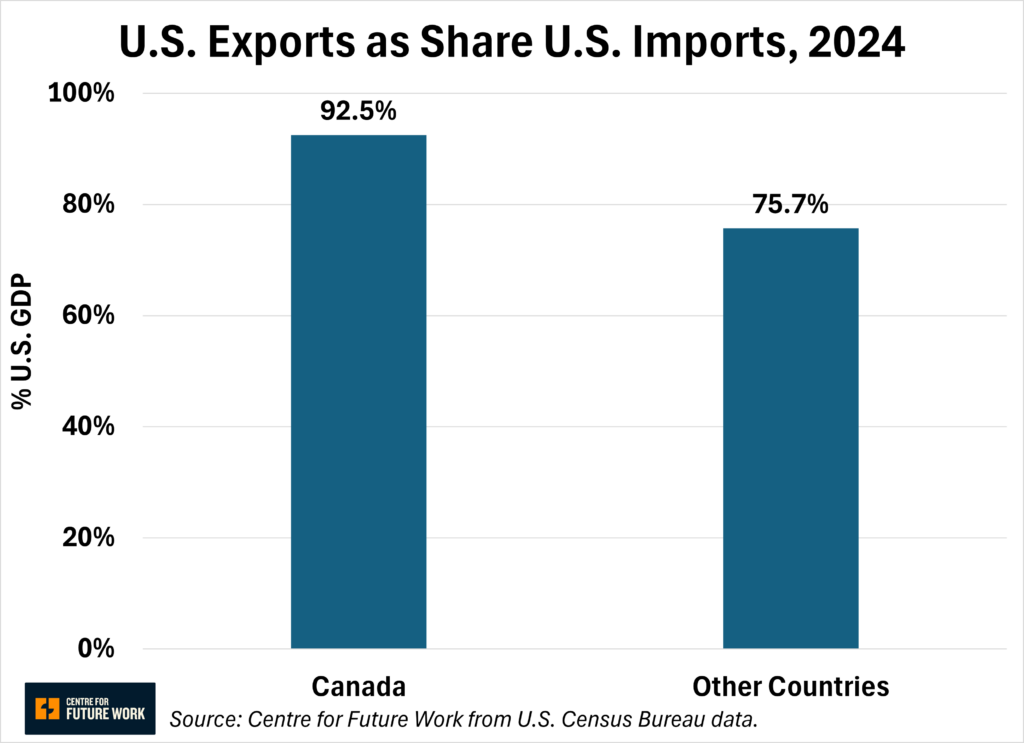
America’s trade with Canada is significantly more balanced than its trade with other countries. Excluding Canada, the U.S. exports just 75.7 cents for every dollar it imports. Curtailing trade with Canada would thus have the self-defeating effect of making America’s overall trade even less balanced.
Trump’s erratic and inconsistent trade announcements have made it clear that his actions are not motivated by a genuine concern with trade deficits – any more than they are motivated by issues such as fentanyl, defense spending, or agricultural supply management. But this latest official data from the U.S. government’s own statistical agency confirms that the U.S. trade deficit is not large by historic standards. And America’s bilateral trade with Canada is uniquely balanced and beneficial.
Please see the Centre for Future Work’s earlier report, Who’s Subsidizing Whom?, for more analysis of the bilateral Canada-U.S. trade relationship, the ways in which Canada subsidizes the U.S. through unusually lucrative trade arrangements, and options for Canadian negotiators in resisting Trump’s unfounded attacks.
